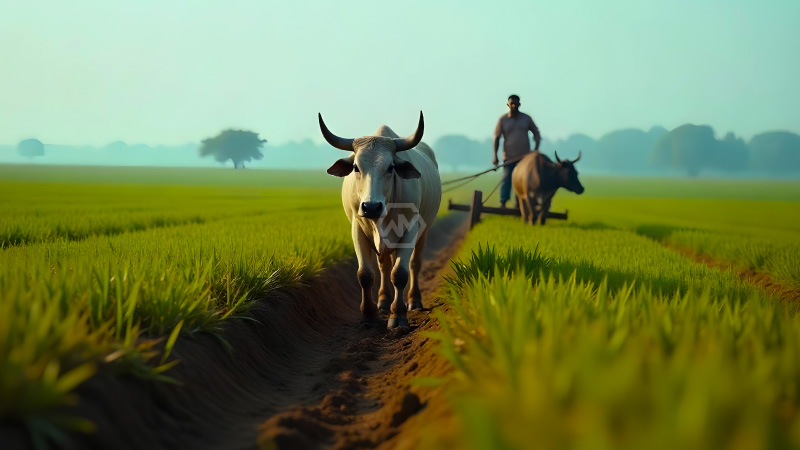- India is on track to achieve a record foodgrain production of 164.7 million tonnes by June 2025.
- The National Mission on Edible Oils – Oilseeds (NMEO-Oilseeds) is being launched to address oilseed production challenges.
- Farmer unrest in Punjab and Haryana continues, with unresolved demands for legal MSP guarantees.
India’s agricultural sector is experiencing significant growth, driven by favorable monsoon conditions and technological advancements. The Ministry of Agriculture projects a record-breaking foodgrain output of 164.7 million tonnes by mid-2025, with a forecasted growth rate of 3.5-4% for 2024-25.
The optimistic outlook is supported by improvements in the kharif season, although concerns remain about the impact of heat waves on the wheat harvest.
India’s Agricultural Ambitions in 2025: Overcoming Challenges with Technological Advancements
Despite these successes, challenges remain, particularly in pulses and oilseeds production. The government has introduced the National Mission on Edible Oils – Oilseeds (NMEO-Oilseeds) with considerable funding to boost self-sufficiency in this area. However, the issue of legal MSP guarantees continues to fuel farmer unrest, especially in states like Punjab and Haryana, where demands for policy changes have yet to be addressed.
While foodgrain production looks promising, challenges persist in the production of pulses and oilseeds, key components for India’s agricultural self-sufficiency. To address these issues, the government has launched the National Mission on Edible Oils – Oilseeds (NMEO-Oilseeds), which promises significant funding and support for boosting domestic oilseed production. This initiative seeks to reduce reliance on imports and enhance the country’s food security.
Despite these efforts, unrest continues among farmers in states like Punjab and Haryana, where calls for legal guarantees on minimum support prices (MSP) have gone unmet. These demands have intensified over the years, with farmers expressing concerns over fluctuating prices and inadequate support. The government’s failure to address these demands may lead to further unrest, potentially hindering the progress of agricultural reforms.
As the sector grapples with both growth and challenges, there is a pressing need for policies that not only boost production but also ensure equitable benefits for farmers. The government’s ability to balance technological advancements with the concerns of the farming community will be crucial in determining the future trajectory of India’s agricultural sector.
India’s agricultural sector is at a critical juncture. With the right balance of technological innovation, policy support, and farmer welfare, the country can achieve sustainable growth and self-sufficiency.
“The future of agriculture lies in the perfect balance between technological innovation and the welfare of the farmers who sustain it.”



